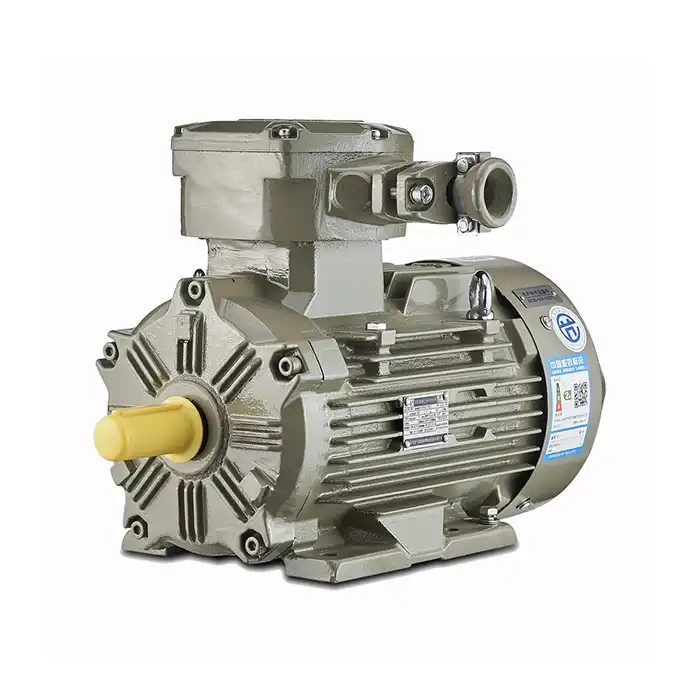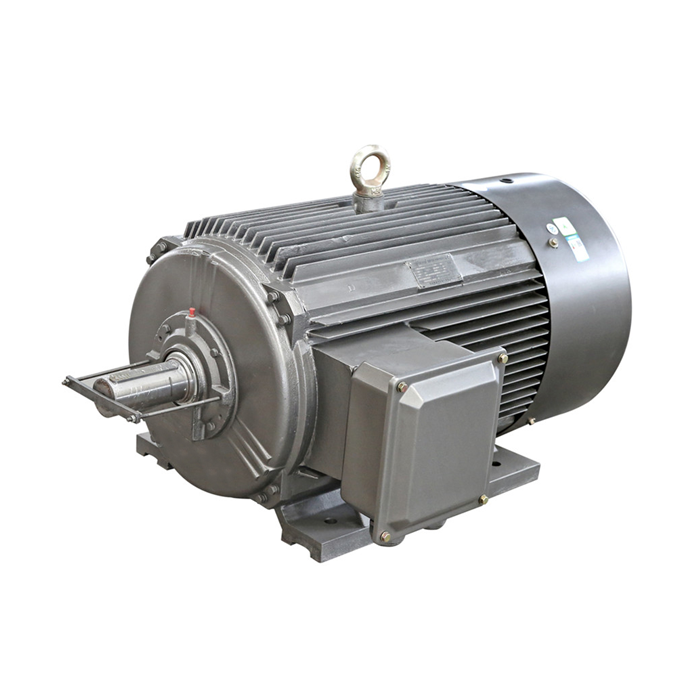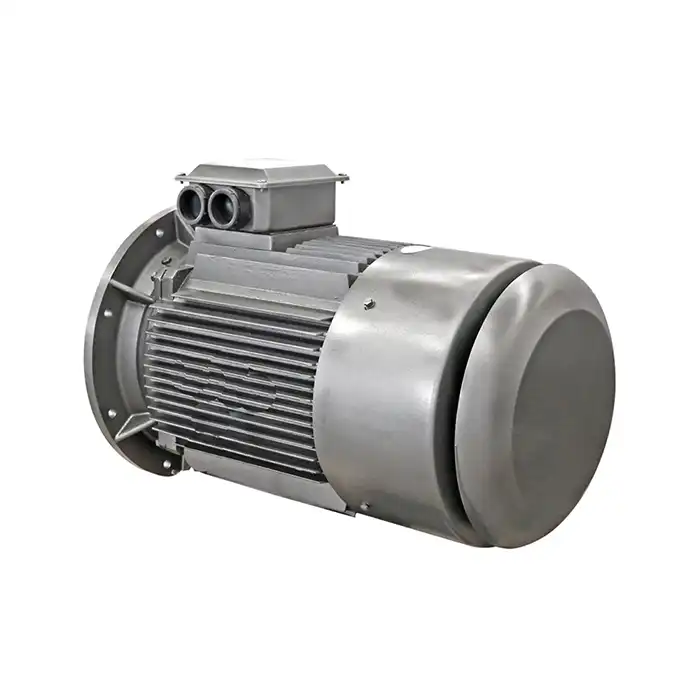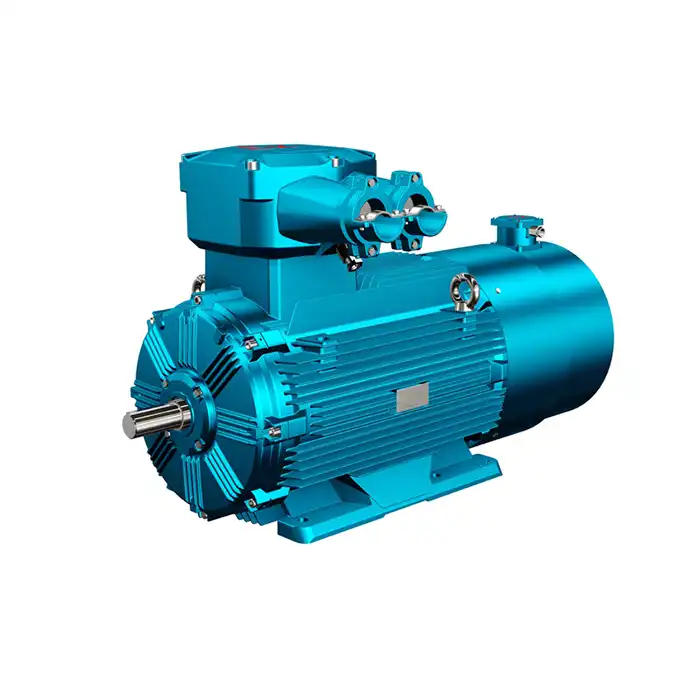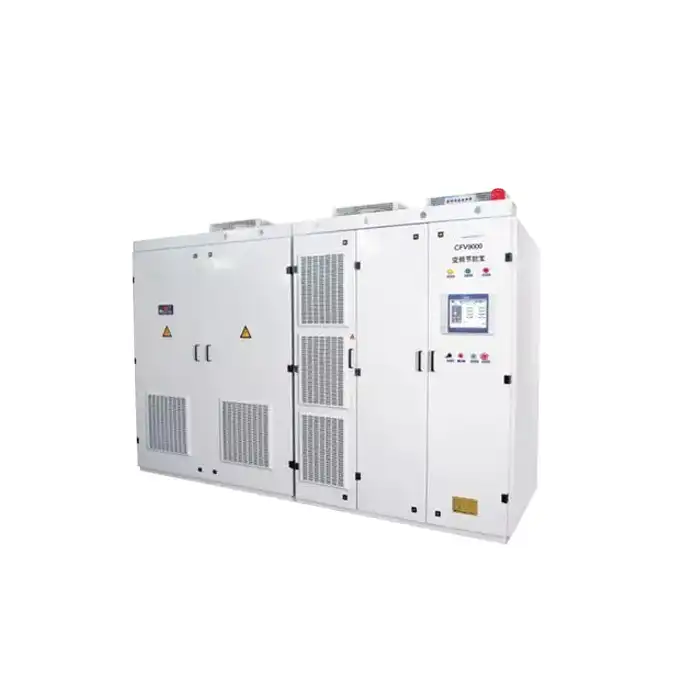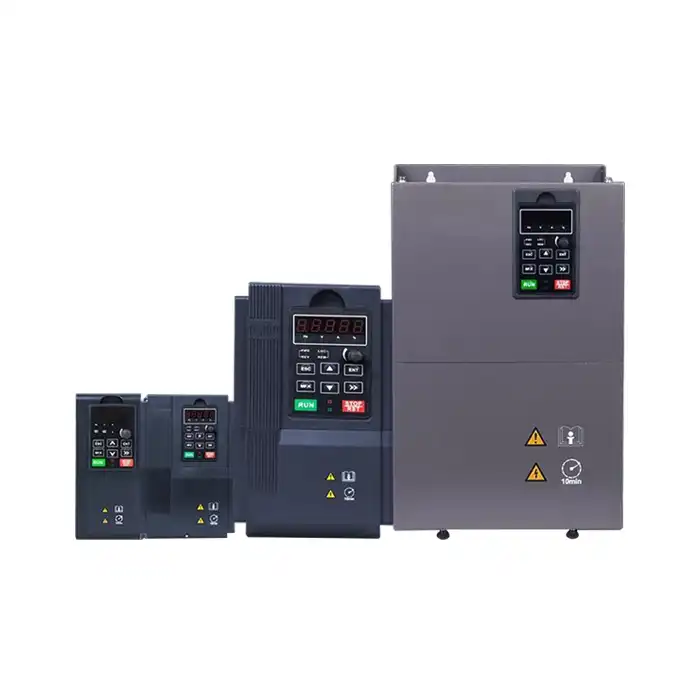One of the most important parts of managing industrial motors is developing thermal protection techniques for systems that use continuous-duty 200 hp dc electric motors. In order to keep operational efficiency high and avoid expensive equipment failures, efficient thermal management is crucial when working with high-power DC motors in challenging settings. These motors are often found in metallurgical rolling mills, metal cutting gear, and cement manufacturing facilities. Extreme thermal stresses faced during continuous operation cycles need advanced protection systems for these powerful motors, which usually operate within the 59-1600kW range and comply with JB/T9577-1999 specifications.

ZSeries:Z
Application:Metallurgical industrial rolling mills, metal cutting machine tools, papermaking, dyeing and weaving, instant brushing, cement, plastic extrusion machinery.
Power range:59-1600kW
Standard: JB/T9577-1999
Understanding the Importance of Thermal Protection
The importance of warm security for high-power DC engines cannot be exaggerated, especially when managing with engines planned for persistent mechanical applications. Overheating poses genuine dangers that amplify distant past basic execution degradation, possibly leading to disastrous engine failure and costly production downtime.
When a DC engine works past its warm limits, a few basic issues arise. The separator lesson F (155°C) rating found in quality engines gives a security edge, but delayed presentation to intemperate temperatures can cause separator breakdown, resulting in winding disappointments that require total engine revamps. Inquiry from the IEEE Industry Applications Society demonstrates that for each 10°C increment over the appraised temperature, engine cover life diminishes by around 50%.
Consider the real-world impact in a steel rolling mill where a 200 hp DC electric motor suddenly fails due to thermal overload. Production stops immediately, affecting downstream processes and potentially costing thousands of dollars per hour in lost productivity. The motor replacement or repair process can extend downtime to several days, making thermal protection investment appear minimal compared to potential losses.
Metallurgical businesses confront especially challenging warm situations. Engines driving rolling plants encounter variable loads and encompassing temperatures that can fluctuate drastically. Without legitimate warm observing and assurance, these engines working with precision-balanced rotors and high-quality heading can endure bearing disappointments, shaft misalignment, and rotor harm that compromises the whole generation line.
Key Thermal Protection Methods
Thermal security gadgets serve as the cutting-edge defense against engine overheating, advertising different approaches to screen and react to temperature changes. Understanding the difference between inactive and dynamic warm administration strategies makes a difference for engineers to select fitting assurance methodologies for their particular applications.
The center warm assurance strategies accessible for mechanical DC engines encompass a few modern approaches:
- Temperature Sensors and RTDs: Resistance Temperature Detectors (RTDs) provide accurate temperature monitoring within motor windings. These sensors offer excellent stability and precision, typically maintaining ±0.1°C accuracy across operating ranges. RTDs integrate seamlessly with modern control systems, enabling real-time temperature monitoring and automated shutdown procedures when thermal limits are approached.
- Thermistors and Thermal Switches: Positive Temperature Coefficient (PTC) thermistors offer cost-effective protection by dramatically increasing resistance when temperature thresholds are exceeded. These devices provide reliable protection for motors operating in harsh environments like cement production facilities, where dust and vibration might affect more sensitive monitoring equipment.
- Thermal Imaging Systems: Advanced thermal protection utilizes infrared monitoring to detect hot spots before they cause damage. These systems prove particularly valuable in papermaking and plastic extrusion applications where motors operate continuously and early detection of thermal issues prevents production interruptions.
- Cooling System Integration: Active thermal management through enhanced cooling systems, including IC06 and IC37W cooling configurations, provides proactive temperature control. These systems maintain optimal operating temperatures even under varying load conditions common in dyeing and weaving machinery applications.
These thermal protection methods work synergistically to create comprehensive motor protection systems. The combination of multiple protection approaches ensures redundancy and reliability, critical factors when 200 hp DC electric motors operate in mission-critical applications where failure consequences extend beyond simple equipment replacement costs.
Comparing Thermal Protection Options
When assessing warm assurance versus over-burden security, understanding the essential contrasts and application benefits becomes significant for making educated choices. Whereas over-burden security centers on current-based observing, warm assurance addresses the genuine temperature conditions that cause engine damage.
Overload assurance gadgets screen engine current and gauge warm conditions based on electrical parameters. These frameworks work well for standard applications but may not sufficiently ensure engines encountering warm push from outside warm sources, blocked ventilation, or corrupted cooling systems. Cost-effective arrangements frequently combine both security strategies to give comprehensive engine safety.
Thermal assurance offers coordinated temperature monitoring, giving a more precise appraisal of real engine conditions. This approach is especially important in situations where encompassing temperatures change altogether, such as metal cutting operations where warm from machining forms influences engine working conditions.
Long-term financial investigation uncovers that appropriate warm assurance frameworks ordinarily pay for themselves within the beginning year of operation. A ponder by the National Foundation of Guidelines and Innovation found that legitimate engine security diminishes startling disappointments by up to 85%, whereas amplifying normal engine life by 40-60%. These changes result in significant fetched reserve funds when connected to high-power engines serving basic generation processes.
The venture in progressive warm assurance becomes indeed more compelling when considering the 150% overburden capacity for 2 minutes, a detail common in quality DC engines. Whereas engines can handle brief overburden, supported operation without appropriate warm checking can rapidly surpass secure temperature limits, especially in applications like moment brushing apparatus where stack varieties happen frequently.
Integrating Thermal Protection into Your Operations
Proper establishment and upkeep of warm security frameworks require cautious consideration to detail and adherence to established best practices. The integration handle starts with a comprehensive framework plan that considers the particular prerequisites of each application and working environment.
Installation best practices incorporate an appropriate sensor arrangement to guarantee precise temperature checking of basic engine components. Temperature sensors ought to be situated in areas that represent real working conditions, whereas maintaining a strategic distance from ranges subject to localized warming or cooling impacts that might give misleading readings.
Regular upkeep conventions guarantee continued framework viability throughout the motor's operational life. Month-to-month assessment plans ought to incorporate confirmation of sensor associations, calibration checks, and audit of chronicled temperature information to recognize patterns that might show developing problems.
Case studies and success stories from various industries demonstrate the real-world effectiveness of comprehensive thermal protection systems. A major paper mill recently reported a 90% reduction in unplanned motor failures after implementing advanced thermal monitoring across its 200 hp DC electric motor fleet. The system paid for itself within eight months through reduced maintenance costs and eliminated production disruptions.
Another victory story comes from a cement generation office where warm assurance frameworks avoided three potential engine disappointments amid a particularly hot summer. The early caution capabilities permitted support groups to address cooling framework issues which time previously caused engine harm, saving an estimated $150,000 in crisis repairs and lost production.
Training programs for upkeep workforce guarantee appropriate framework operation and maximize the benefits of warm assurance ventures. Well-trained administrators can translate warm information effectively and react suitably to framework alarms, avoiding minor issues from developing into major problems.
About Our Company
Shaanxi Qihe Xicheng Electromechanical Hardware Co., Ltd. stands as a trusted provider of comprehensive control hardware arrangements, specializing in high-performance DC engines and related assurance frameworks. Our mastery in engine security arrangements reflects a long history of involvement serving assorted mechanical divisions, including metallurgical operations, manufacturing offices, and renewable vitality installations.
Our commitment to quality and unwavering quality shows through thorough fabrication forms and comprehensive quality control measures. Each engine experiences broad testing to guarantee compliance with universal measures, including ISO 9001:2015 and CE stamping requirements. This commitment to fabulousness guarantees that our engines meet the demanding necessities of continuous-duty applications in challenging mechanical environments.
The company's comprehensive benefit offerings incorporate application building back, establishment direction, and continuous specialized help. Our group of experienced engineers works closely with clients to create customized arrangements that address particular safety requirements and operational constraints.
Original items sourced from trusted brands, combined with quick conveyance capabilities and 30-day return approaches, give clients certainty in their hardware speculations. Our committed back group works seven days a week, guaranteeing that specialized help remains accessible when required most.
Conclusion
Effective warm assurance techniques for continuous-duty DC engines speak to basic speculations in operational reliability and hardware life span. The combination of progressed observing advances, appropriate framework integration, and comprehensive support conventions guarantees ideal engine execution while minimizing the chance of expensive disappointments. Businesses extending from metallurgical operations to the renewable vitality era benefit from executing vigorous thermal safety systems that provide early warning capabilities and robotized reaction strategies. The financial benefits of appropriate warm assurance, including decreased support costs and reduced generation disturbances, regularly justify the initial investment in the to begin with year of operation, making warm assurance a fundamental component of any comprehensive engine administration strategy.
Frequently Asked Questions
Q1: What temperature threshold should trigger thermal protection in a 200 HP DC motor?
A: Warm security ought to activate when winding temperatures approach 85-90% of the separator course rating. For Course F cover (155°C), this implies assurance enactment around 130-140°C. In any case, particular limits depend on application necessities and surrounding conditions. Engines in high-temperature situations like steel plants may require more traditional settings.
Q2: How often should thermal protection systems undergo calibration and maintenance?
A: Warm security frameworks require quarterly calibration checks for basic applications and semi-annual upkeep for standard mechanical utilize. Temperature sensors ought to be confirmed against calibrated references, and authentic information ought to be surveyed for trending examination. Yearly comprehensive assessments ought to incorporate total framework testing and documentation updates.
Q3: Can thermal protection systems integrate with existing motor control systems?
A: Advanced warm security frameworks offer fabulous integration capabilities with existing control stages through standard communication conventions, including Modbus, Ethernet/IP, and analog interfacing. Integration permits centralized observing, robotized reaction methods, and joining of warm information into predictive support programs. Compatibility evaluation ought to be conducted during framework selection.
Protect Your Investment with XCMOTOR's Advanced Solutions
Working with a seasoned 200 hp DC electric motor supplier that understands the significance of heat protection in continuous-duty applications is crucial for protecting your industrial operations. To make sure your machinery runs smoothly and securely, XCMOTOR takes a holistic view of motor protection by integrating state-of-the-art technology with tried-and-true dependability.
Take the next step toward enhanced equipment protection and operational reliability. Our comprehensive thermal protection solutions have proven their effectiveness across diverse industrial applications, and our commitment to customer success ensures you receive the ongoing support necessary for long-term success. Contact us at xcmotors@163.com to discuss your thermal protection requirements and discover how our advanced solutions can benefit your operations. Visit motorxc.com for detailed product specifications and technical resources.
References
1. IEEE Industry Applications Society. "Thermal Management in Industrial DC Motors: Best Practices and Protection Strategies." IEEE Transactions on Industry Applications, Vol. 58, No. 3, 2022.
2. National Institute of Standards and Technology. "Economic Impact of Motor Protection Systems in Industrial Applications." NIST Technical Publication 1890, 2021.
3. International Electrotechnical Commission. "Thermal Protection Requirements for Continuous-Duty DC Motors." IEC 60034-11 Standard, Fourth Edition, 2020.
4. American Society of Mechanical Engineers. "Thermal Analysis and Protection Methods for High-Power DC Motors." ASME Power Conference Proceedings, 2023.
5. Industrial Motor Research Institute. "Comparative Study of Thermal Protection Technologies in Heavy Industry Applications." Motor Technology Quarterly, Volume 45, Issue 2, 2022.
6. Energy Efficiency Council. "Thermal Management Strategies for Continuous-Duty Motor Applications in Manufacturing." Energy Efficiency in Industry Report, 2023.



